The Dive Guide
All liveaboards have two Dive Guides on them and they are critical to a good trip. Sometimes they are locals and sometimes (as on this trip), they are expats working in Egypt, in this case from Argentina.
Gabriel and Maria have worked in the Red Sea for many years and it seems that there is little which they do not know about the numerous dive sites we visit. Hence it would be foolish diver who did not take their advice about where to dive and what to see. On occasions they will even suggest a change to the official itinerary because they know that what you are interested in will not be at the scheduled sites on this trip.
We first meet them when we board the Grand Sea Serpent on our first night and are taken through boat rules, safety procedures and the rough plan for the trip. They also check our dive certification (no cards means no diving) and show us the dive record sheets we have to fill in after each dive (air pressures, nitrox percentage, maximum depth and dive duration) – these sheets would be used by the medical services if we got into difficulty.
Before each dive, they carry out the dive site briefing during which its layout is explained to us, any particular features are covered, the likely life is discussed and pictures are shown. Some deliver the bare minimum, others (as in this case) like to educate us about aspects of marine biology.
They also are responsible for administering emergency support if a diver is suspected of suffering from decompression sickness and they are in charge of the boat first aid kit and dispense tablets on request (at your risk). Diarrhoea tablets are a common request because a combination of a new diet, diving and lots of liquid intake can have its effect – the local medication is usually more successful than anything brought with us because it is designed to work on local bugs.
Other than on night dives, one or both of them are always in the water during a dive and we are always asked the question “who would like to follow a guide?” As a general rule, I always go with a guide because they know the site and can point out things which I would not see if just diving with my buddy. They also tend to know where the boat is and being with someone who knows this, takes away this worry from my dive.
Quite often they will test the water before a dive in order to check the current is going in the general direction and with the strength we have been briefed and if necessary, instantly change the dive plan. As a general rule, this works well although I can remember one dive where the current at depth was totally different to the current near the surface and everyone was forced to improvise a new dive plan down at 30m. Luckily because the current was so strong and as a group we were tightly packed so we all went the same wrong way and the ribs had an easy job finding us.
On night dives. they are both on the rear deck keeping a lookout for divers coming back to the surface and then organising a rib to go out an pick you up if you surface some way away from the boat or signal that you want help. I dive easier at night knowing that the dive deck is manned by someone with my safety in mind.
On this trip it was explained to us that their preferred approach is to go for dive site quality and long dive duration rather than a larger number of short dives on easy sites. My average dive time this trip was 70 minutes, the longest dive was 87 minutes and I was usually surfacing with at least 50bar. During the course of the week I spent 21 hours underwater, considerably more than with a guide who goes for a higher number of dives in order to make your log book look full. Their approach was the best I have met on any dive trip.
The Tienstein Wreck, caves and reefs
The boat is moored between the two reefs on the above plan, roughly where the red arrow is. The plan is to enter the water from a Rib (negative entry) to the North West (off the top of the dive plan), explore the coral garden, fin south, reef wall on left shoulder, cross the gap between the two reefs, head for the wreck, explore the wreck and then explore some caves whose entrance is on the southern side of the bow at about 8m depth. Then head back to the boat or put up SMBs for a rib pickup.
The coral garden is truly spectacular and in quite good condition because most divers concentrate on the wreck – hence the coral is undamaged.
There are the usual table corals and this one, more than
any we have seen elsewhere shows how a hard table coral works - as wide a spread of coral, as flat as possible in order to receive as much sunlight as possible since sunlight equals food and at depth, you want as much as you can get (if you are a hard coral).
The table seen from above is absolutely covered with coral life.
Elsewhere, Staghorn Coral is in profusion as usual,
colourful soft corals and
Anemones abound
and the shoals are of a size larger than seen elsewhere. This one allowed me to fin right up close to it before it decided to move on.
As is the norm with these guides, great excitement was generated by small life.
A Bighorn Nembrotha was found (it is about twice life size in this photograph)
and a Clown Shrimp was found on a hard coral
so called because of its markings.
The Tienstein is a tugboat which hit one of the two pinnacles near its sunk position in 1947. It managed to get to the main reef but sunk from the stern. Its bow is just
above water but not a lot of the bow is left now (just above the centre of the photo) and the remains below the water are extensively covered with coral.
The hold (above)
The engine room and steps leading down to it
The essential small room
and a barnacle encrusted anchor up high near the surface showing where they tried to anchor it after finding the reef.
There is a cave near the bow which few divers know about
and the entrance is adjacent to a lovely large hard coral.As we were leaving the dive site, lots of other divers appeared from a dive boat which had moored above the wreck – they were concentrating on the wreck only. Little did they know of what they were missing elsewhere on the reef – things we saw because of our dive plan.
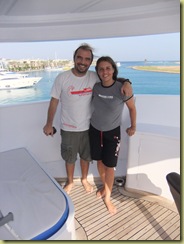


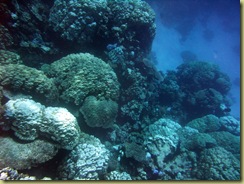
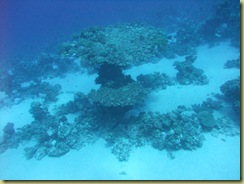
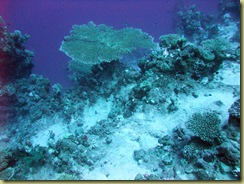
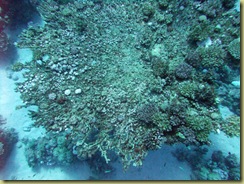
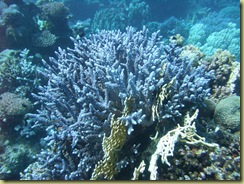
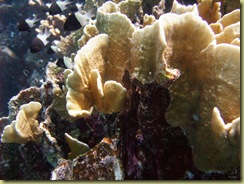
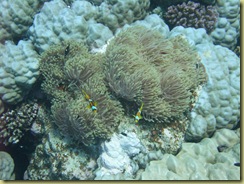
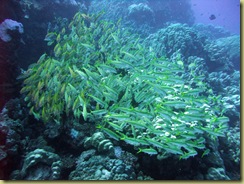
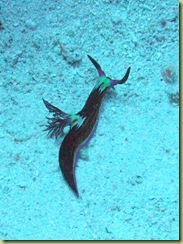
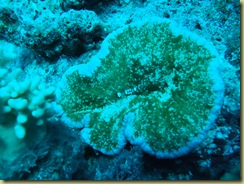
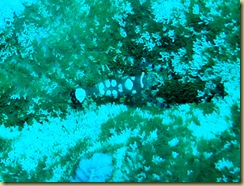
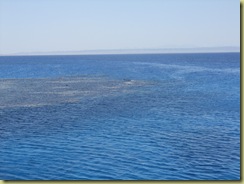
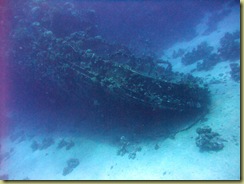
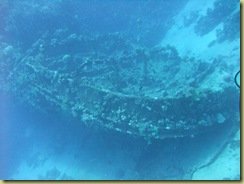
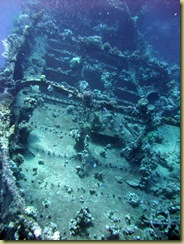
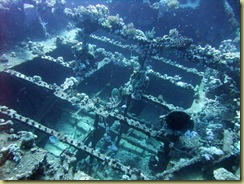
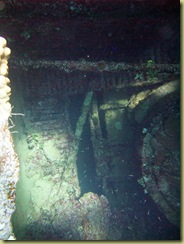
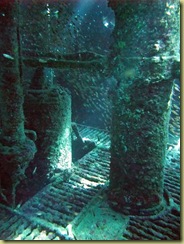
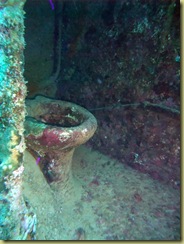
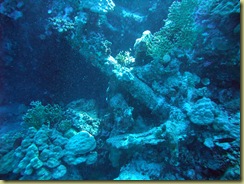

No comments:
Post a Comment